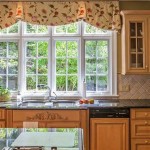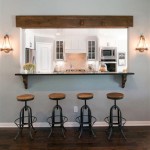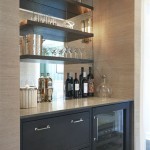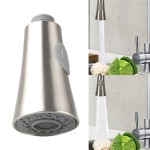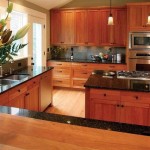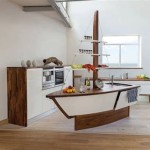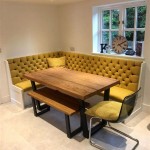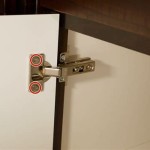Decorative Kitchen Plates For Wall Decorations
Decorative kitchen plates offer a unique and versatile approach to enhancing the aesthetic appeal of a kitchen space. They provide an opportunity to introduce color, texture, and pattern, transforming a functional area into a visually engaging environment. Unlike traditional wall art, decorative plates offer a link to culinary themes, evoking a sense of warmth and domesticity. The selection of plates, their arrangement, and the method of display all contribute to the overall impact of this decorative element.
The practice of using plates as decorative objects dates back centuries, with examples found in various cultures. Historically, displaying fine china represented affluence and good taste. Today, the use of decorative plates extends beyond mere status symbols. They serve as a medium for artistic expression, allowing homeowners to personalize their kitchens and reflect their individual styles. The variety of available styles, from antique porcelain to contemporary ceramic designs, ensures that there is a decorative plate to suit every taste and décor.
Choosing the Right Decorative Plates
The selection process for decorative kitchen plates involves a careful consideration of several factors. The existing kitchen décor, the desired aesthetic, and the size and layout of the wall space all play crucial roles in determining the appropriate plates to choose. It is essential to consider the color palette of the kitchen. Plates can either complement or contrast with the existing color scheme. Complementary colors create a harmonious and cohesive look, while contrasting colors add visual interest and vibrancy. For instance, in a kitchen with neutral tones, brightly colored plates can serve as focal points, injecting personality and energy into the space.
The style of the kitchen is another critical consideration. A rustic kitchen might benefit from antique-style plates with floral patterns or depictions of rural scenes. A modern kitchen, on the other hand, might call for minimalist plates with geometric designs or abstract patterns. The material of the plates should also be considered. Porcelain plates offer a classic and elegant look, while ceramic plates are more durable and versatile. Glass plates can add a touch of sophistication and reflect light, making the space feel brighter. The size of the plates should be proportional to the wall space. A large wall can accommodate a larger collection of plates, while a smaller wall might only require a few strategically placed pieces.
Furthermore, the theme of the plates can contribute to the overall ambiance of the kitchen. Plates depicting fruits, vegetables, or culinary tools can reinforce the function of the space and create a connection to food and cooking. Plates with landscape scenes or botanical illustrations can bring a touch of nature indoors. Plates with abstract designs can add a modern and artistic flair. Ultimately, the choice of decorative plates should reflect the homeowner's personal style and preferences.
Arranging Decorative Plates on the Wall
The arrangement of decorative plates on the wall is as important as the selection of the plates themselves. A well-arranged display can transform a collection of individual plates into a cohesive and visually appealing work of art. There are several approaches to arranging decorative plates, each with its own distinct advantages. One common approach is the symmetrical arrangement, which involves placing plates of similar sizes and shapes in a balanced and orderly manner. This creates a sense of formality and elegance. Symmetrical arrangements are particularly well-suited for traditional kitchens or kitchens with a classic design.
Another approach is the asymmetrical arrangement, which involves placing plates of different sizes and shapes in a more random and organic manner. This creates a sense of informality and spontaneity. Asymmetrical arrangements are well-suited for modern kitchens or kitchens with an eclectic design. To achieve a cohesive asymmetrical arrangement, it is important to maintain a sense of balance. This can be done by varying the spacing between the plates and by using plates with similar colors or patterns to tie the arrangement together.
A gallery wall arrangement is another popular option, involving a collection of plates of varying sizes and styles, arranged in a way that resembles a gallery of art. This approach allows for a great deal of creativity and personalization. Gallery wall arrangements are well-suited for kitchens with a large wall space. To create a successful gallery wall arrangement, it is helpful to plan the layout in advance. This can be done by laying the plates out on the floor and experimenting with different arrangements until a pleasing composition is achieved.
Consider the spacing between the plates. Too little space can make the arrangement feel cramped, while too much space can make the arrangement feel disjointed. A general guideline is to leave a space of about 2 to 4 inches between the plates. The height at which the plates are hung is also important. The center of the arrangement should be at eye level. This will ensure that the plates are easily visible and appreciated. Use painter's tape to mark the locations of the plates on the wall before hammering in any nails or screws. This will allow you to make adjustments to the arrangement without damaging the wall.
Methods for Hanging Decorative Plates
The method used to hang decorative plates is crucial for ensuring their safety and stability. Improper hanging can lead to plates falling and breaking, which can be both dangerous and disappointing. There are several methods available for hanging decorative plates, each with its own advantages and disadvantages. Spring plate hangers are a popular option. They consist of a wire spring that grips the edges of the plate. They are relatively easy to install and can accommodate a wide range of plate sizes. However, spring plate hangers can be visible, which may detract from the overall aesthetic. They are also not suitable for very heavy plates.
Adhesive disc hangers are another option. These consist of an adhesive disc that attaches to the back of the plate. They are invisible when the plate is hanging, creating a clean and seamless look. However, adhesive disc hangers are not as strong as spring plate hangers and are only suitable for lightweight plates. It is important to choose a high-quality adhesive disc hanger that is specifically designed for hanging plates. Follow the manufacturer's instructions carefully to ensure that the hanger is properly installed.
Plate hanging kits are also available, which typically include a combination of hardware, such as screws, hooks, and wire. These kits offer a more secure and customizable hanging solution. To use a plate hanging kit, you will need to drill a hole in the back of the plate. This can be done using a diamond-tipped drill bit. Be careful not to drill all the way through the plate. Once the hole is drilled, you can attach the hardware and hang the plate on the wall. This method is more time-consuming and requires more skill, but it provides a more secure and permanent hanging solution.
Regardless of the hanging method chosen, it is important to test the stability of the plate before leaving it unattended. Gently tug on the plate to ensure that it is securely attached to the wall. If the plate feels loose or unstable, adjust the hanging method or try a different approach. Regularly inspect the hanging hardware to ensure that it is still in good condition. Replace any worn or damaged hardware to prevent the plates from falling.
Furthermore, consider the type of wall. Drywall requires the use of anchors to provide adequate support for the plates. Use appropriate anchors that are specifically designed for drywall. Plaster walls can be more challenging to work with, as they are prone to cracking. Use a sharp drill bit and drill slowly and carefully to avoid damaging the plaster. Brick walls require the use of masonry screws and anchors. These screws and anchors are designed to grip the brick and provide a secure hold.

Set Of 3 Wall Plates Decorative Ceramic Hanging Large Turkish Handmande Home Kitchen Decor Serving Desert Dinner Platter Gift

The Ultimate Guide To Decorating With Plates On Wall Laurel Home

Unique Plate Wall Decor Vintage Style Display Ideas

32 Decorative Plate Ideas Creative Ways To Style Your Walls

The Ultimate Guide To Decorating With Plates On Wall Laurel Home

Decorative Wall Plates French Country Kitchen Decor

Piazza Pisano Decorative Wall Plates French Country Kitchen Decor

Wall Decorations Blue And White Dinner Plates Mismatched China Porcelain Dishes New Vintage Mix Match Kitchen Dining Room 9 11

Plates As Wall Decor

32 Decorative Plate Ideas Creative Ways To Style Your Walls
Related Posts

